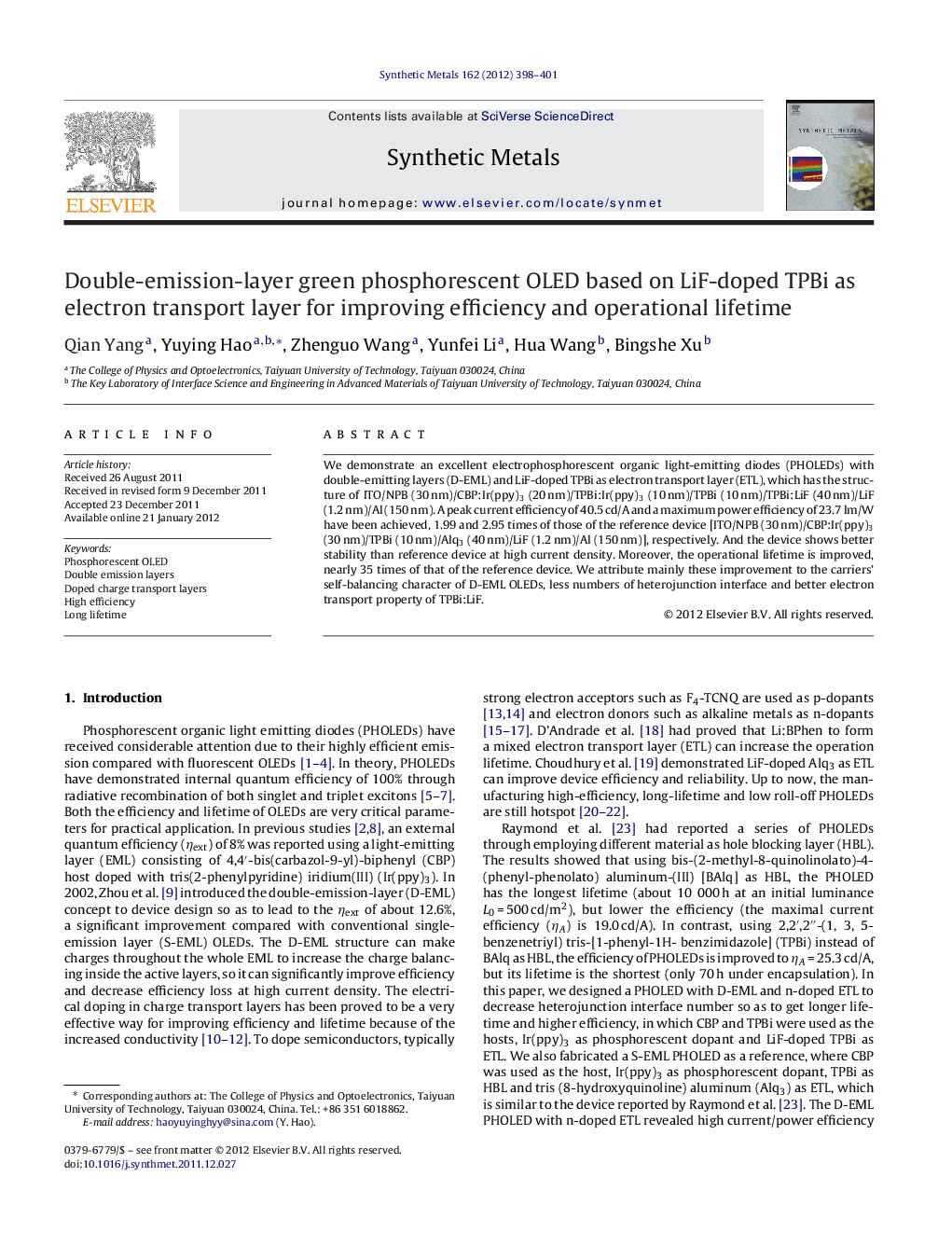| Article ID | Journal | Published Year | Pages | File Type |
|---|---|---|---|---|
| 1441830 | Synthetic Metals | 2012 | 4 Pages |
We demonstrate an excellent electrophosphorescent organic light-emitting diodes (PHOLEDs) with double-emitting layers (D-EML) and LiF-doped TPBi as electron transport layer (ETL), which has the structure of ITO/NPB (30 nm)/CBP:Ir(ppy)3 (20 nm)/TPBi:Ir(ppy)3 (10 nm)/TPBi (10 nm)/TPBi:LiF (40 nm)/LiF (1.2 nm)/Al (150 nm). A peak current efficiency of 40.5 cd/A and a maximum power efficiency of 23.7 lm/W have been achieved, 1.99 and 2.95 times of those of the reference device [ITO/NPB (30 nm)/CBP:Ir(ppy)3 (30 nm)/TPBi (10 nm)/Alq3 (40 nm)/LiF (1.2 nm)/Al (150 nm)], respectively. And the device shows better stability than reference device at high current density. Moreover, the operational lifetime is improved, nearly 35 times of that of the reference device. We attribute mainly these improvement to the carriers’ self-balancing character of D-EML OLEDs, less numbers of heterojunction interface and better electron transport property of TPBi:LiF.
► LiF-doped TPBi as electron transport layer. ► Electrophosphorescent organic light-emitting diodes based on double-emitting layers. ► The efficiency and operational lifetime are remarkably improved. ► The device shows better stability at high current density.
